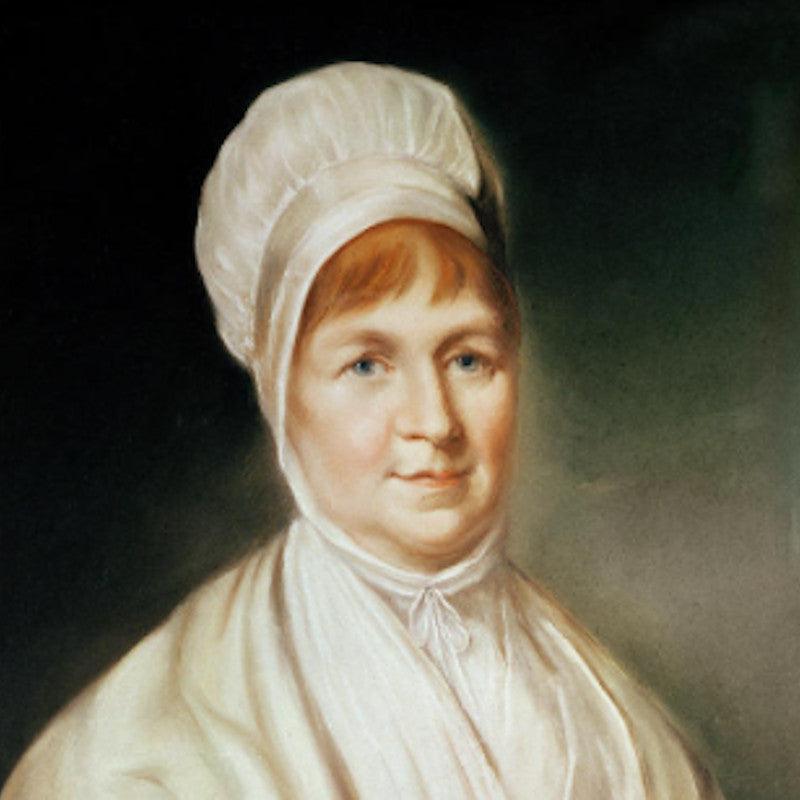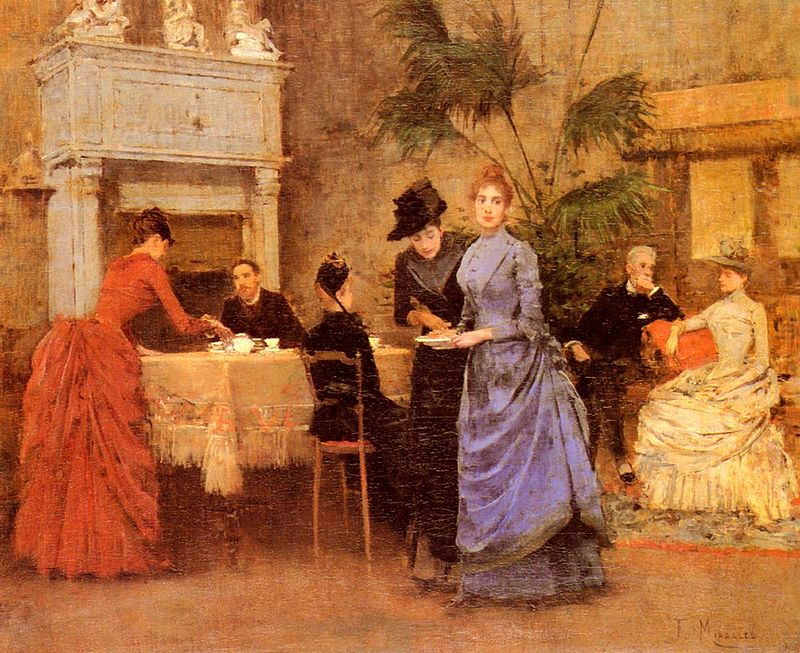Sie kennen wahrscheinlich die Geschichte, wie Jane Austens Tante, Jane Leigh Perrot, wurde fälschlicherweise beschuldigt, einen Haberdashers in Bath gestohlen und bei Taunton Assizes verfolgt zu werden. Es wird angenommen, dass der Anschuldigungen ein Versuch war, erpresst zu werden Die Familie, bekannt als wohlhabend und komfortabel. Der Prozess selbst, der im März 1800 stattfand, dauerte Berichten zufolge einige Stunden, aber als die Jury gebeten wurde, eine Entscheidung zu treffen, brauchte es nur fünfzehn Minuten, um Jane freizulegen.
Der beste Bericht über die Testversion ist immer noch Frank Douglas Mackinnon's Grand Diebstahl (1937), die eine Reihe von Briefen enthält, die an Jane und ihren Ehemann James gerichtet sind. Auf den Seiten 26-27 gibt es einen langen Brief von einem 'RW' an James Leigh Perrot, der die Anklage gegen Jane bespricht. Drei Passagen wurden jedoch von MacKinnon auf mysteriöse Weise weggelassen, von denen der erste besonders wichtig ist.
Unten finden Sie eine vollständige Transkription des Buchstabens mit den drei fehlenden Passagen, die durch quadratische Klammern angegeben sind. Der einzige Autor, der den vollständigen Text kommentiert, war William Galperin, Autor von Der historische Austen (2003) auf den Seiten Seiten 39-40.
Grey Hound Inn,
Marktplatz,
29. Oktober
Sir, Ihre bekannte Ehre würde mich dazu veranlassen, Sie persönlich anzusprechen, anstatt diese Methode zu übernehmen, um Sie über die Umstände zu informieren, mit denen es richtig ist, Sie sollten vertraut werden, aber ich bin verpflichtet, auf eine große Familie Brot für eine große Familie zu verdienen Ich kann; Und obwohl es meine schwere Menge ist, dieses Brot in die Beschäftigung eines der größten Schlingel zu bekommen, das je gelebt hat, habe ich das bewusste Vergnügen zu wissen, dass ich mehr als einmal an denjenigen gearbeitet habe, die möglicherweise unter seiner Unehrlichkeit gelitten haben. Die Art meiner Beschäftigung verpflichtet mich, so in der Nähe der Stelle zu platzieren Beratungsraum von Gye (Der Bösewicht, auf den ich anspielt), dass er keine Ahnung hat, dass ich höre, was ich tue. Ihre Treffen sind häufig und sind erheblich enttäuscht, dass kein Angebot von Ihnen gemacht wurde, die Zeugen gegen Ihre unschuldige und hoch verletzte Frau abzukaufen. Sie haben versucht, eine sichere Methode zu finden, um dies selbst vorzuschlagen, haben aber Angst voreinander. Sie zirkulieren die falschsten und schädlichsten Verleumdungen, um Frau Perrot in die Welt zu beeinträchtigen, aber sie finden, dass sie zu viele Freunde hat, um zu diesem Zweck erfolgreich zu sein.

[Es wird jedoch diejenigen, die die Güte ihres Charakters nicht gewusst haben, mit ihnen auf die Seite sein. Dieser schwarzherzige Mann hatte die große Kühnheit, auf eine Dame in der Oberstadt (die Frau eines der wirklich angesehensten Einwohner dieser Stadt) zu warten, um zu bitten, dass sie sich als Zeuge melden würde, das Filby in ihr zusammenfaltete Präsenz und dass es in der Zeitung nichts gab, außer dass die schwarze Spitze Frau P gekauft hatte. Sein Empfang war jedoch so unterschiedlich als das, was er gehofft hatte, dass er glaube, dass er bereut hat, sich beworben zu haben. Sie saß in ihrem Hintergrund und wartete auf das Schreiben ihrer Rechnung, als Filby das Paket halb zusammenbrachte. Dies sah sie sicherlich, aber wie konnte sie sagen, was die Zeitung enthielt? Sie wusste auch nicht, was Frau P gekauft hatte; In der Tat würden ihre Beweise gegen Filby (wenn sie erscheinen würde), denn sie konnte nur bemerken, dass er bei der Faltung des Papiers unglaublich aufgeregt und beeilt war, aber sie vermutete zu dieser Zeit möglicherweise, dass er das erzählt hatte, dass er das gesagt hatte Sein Abendessen war fertig. Ihr Mann kam, als Gye ausging. Sie bat ihn, dem Herrn zu sagen, was sein Auftrag gewesen war. Seine Beobachtung an Gye war, dass er sich für diesen Zweck bei den falschen Leuten beworben hatte Exzellenz ihres Charakters, um einen Moment ihrer Unschuld zu bezweifeln. Er stellte ferner fest, dass er gehört hatte, dass Filby abgesetzt hatte, dass er das Papier mit der Spitze zusammengeklappt hatte, die Frau P gekauft hatte, und es ihr geliefert hatte, als sie im Laden stand. Wie könnte dies damit einverstanden sein, dass sie seiner Frau schwöre, dass sie ihn in der Backoffice zusammenfalten sah, in der Frau P noch nie gewesen war? Aus der ersten Ansicht war der Betrug auffindbar. Diese Angaben, die die Dame dem Schriftsteller davon erzählte, und wünschte, es könnte eine Möglichkeit geben, Frau P darüber zu informieren. Zu einem späteren Zeitpunkt kann sie benannt werden.]
-
Gye hat noch eine Karte zum Spielen, die er rühmt. Wenn Frau P keine beträchtliche Vergütung für die Ausgaben anbieten sollte, die sie gewesen sind, wird er einen lächerlichen Druck Ihres Wappen mit einer Karte mit Spitzen und anderen Artikeln in der Rechnung des Papageien veröffentlichen. Aber seien Sie fest, Sir, geben Sie dem Schurkenseil genug und er wird sich selbst hängen.
-
[Ich lebe in der Hoffnung, die Tische auf ihn zu machen; und seien Sie versichert, dass bei der ersten Gelegenheit, die mir sowie viele andere anbietet, öffentlich an seinem Sturz zusammenarbeiten wird.]
-
Ich schaue auf a religiöser Heuchler Um die gefährlichste aller Sünder zu sein, und dieser Mann unter dieser Verkleidung wird eingesetzt, um Belastungen durch gemeinnützige Menschen zu entlasten, deren Kopfgeld niemals halb von denjenigen empfangen wird, für die es beabsichtigt ist. Seine Sprache in der Stadt ist, dass, wenn der Prozess Mrs Ps stattfindet Transport ist sicher.
-
Als ich informiert bin, dass Ihre Diener jede Woche alle Briefe weiterleiten, werde ich dies in Ihrem Haus lassen, und mit meinen herzhaften Wünschen nach Gesundheit und Wohlstand für sich und Frau Perrot werde ich jemals bleiben, würdiger Sir,
Ihr ergebener bescheidener Diener,
Rw
-
Was halten Sie von diesen fehlenden Passagen? Es ist ziemlich merkwürdig, dass sie weggelassen wurden. Wir würden gerne von Ihnen hören, wenn Sie mehr wissen!
David Pugsley ist der Hon -Archivar der Western Circuit, einer Organisation für Rechtsanwälte zwischen Gloucester und Winchester und Land's End. Er gibt Gespräche und schreibt Artikel über die Geschichte farbenfroher Rechtsanwälte und führende Strafsachen, hauptsächlich Morde, und das Gesetz des Duellings im Bereich des Kreislaufs. Er las Emma Mit dem kritischen Auge eines Anwalts betrachten Sie die Beweise. Er hätte gern geprüft Augusta Elton.
-





4 Kommentare
The remarks about this case in Rev. William Holland’s diary suggest the legal rumour mill was unkind to Mrs Perrot, strongly implying she had bribed her way out of trouble. The entry for 22 March 1800 reads:
“At Stowey met Mr. Symes the Lawyer. He told me that Mrs. Parrot has bought off her prosecutor. Alas, alas that money should be able to screen a person from Justice in this Kingdom so remarkable for good laws and uncorrupted Judges. She was accused of stealing lace out of a shop in Bath, is a person of considerable fortune and has a poor Jerry Sneak of a husband who adheres to her through all difficulties.” (‘Paupers and Pig-killers: the diary of William Holland…’, Penguin, 1986)
Personally I think she did it. That she was clearly a wealthy and strong-minded woman of previously good character doesn’t rule anything out, as the tragic case of Isobel, Lady Barnett proves.
R Lamb
The date of RW’s letter is not clear. MacKinnon read it as Oct 29(?), but that is very unlikely in the light of the content of the newly transcribed passage. On closer inspection I read: Grey Hound Inn, Market Place, Bath, 19 inst. (?), which fits much better.
Anonymous
Barbara Ker Wilson, in her novel Jane Austen in Australia, does not imagine what would have happened if Mrs L-P had been found guilty and transported. It correctly records that the jury took less than fifteen minutes to find her Not Guilty: see pages 64-68. The visit to Australia, in the novel, was due to a sudden and uncharacteristic burst of enthusiasm, on the part of James L-P, for the fauna and flora of the antipodes.
In spite of the assertion in the Avant-Propos, p. 7, that the details of the trial are factual, there are lots of errors. In particular, she says that Gregory’s elder sister had died (pages 11-12) and that in June 1800 the former haberdashery shop was still shuttered and awaiting a new tenant (p. 84). In fact, Gregory’s elder sister, Mary Smith, the proprietor of the business, ran it very successfully, in spite of the trial, from 1798-1807: see No. 1, Bath Street and Mary Smith, Jane Austen Blog: Regency History, 2 Sept 2019.
Anonymous
The author, Barbara Ker Wilson, wrote a novel called Jane Austen in Australia which imagines what would have happened if Mrs L P had been found guilty and transported. In the novel, Jane Austen goes with her aunt and gives accounts of Sydney, more usually called Port Jackson then, in its very early days. Well researched this is a good read!
Anonymous
Hinterlasse einen Kommentar
Diese Website ist durch hCaptcha geschützt und es gelten die allgemeinen Geschäftsbedingungen und Datenschutzbestimmungen von hCaptcha.